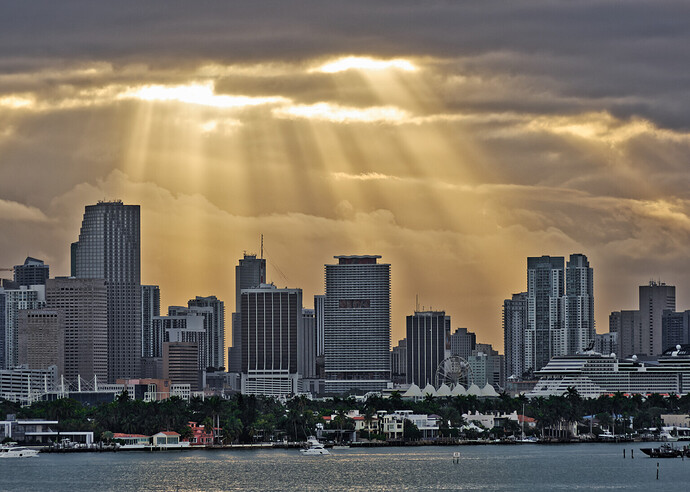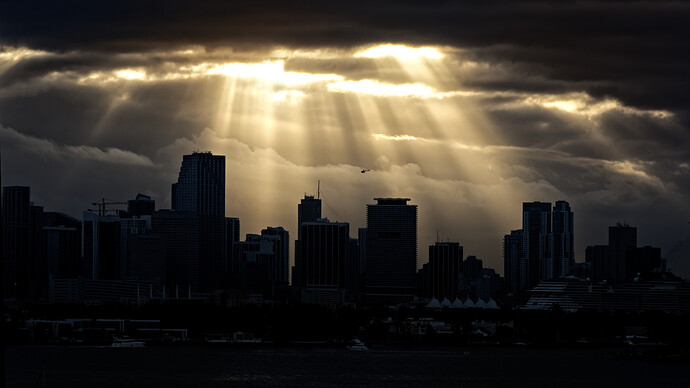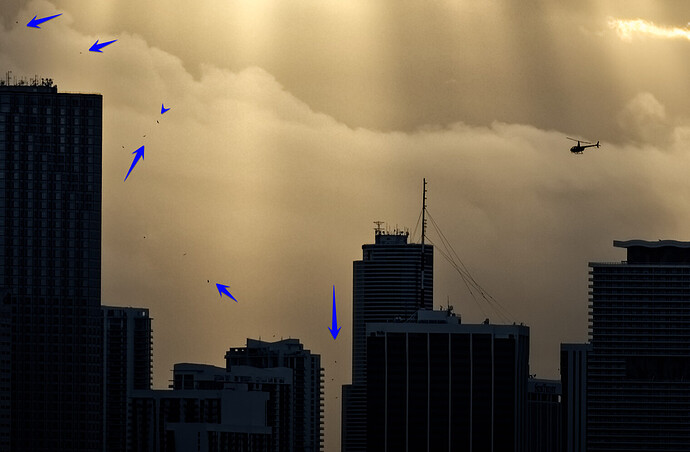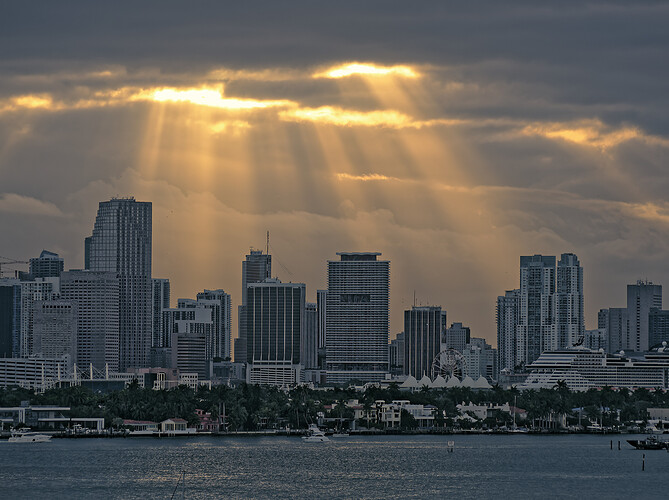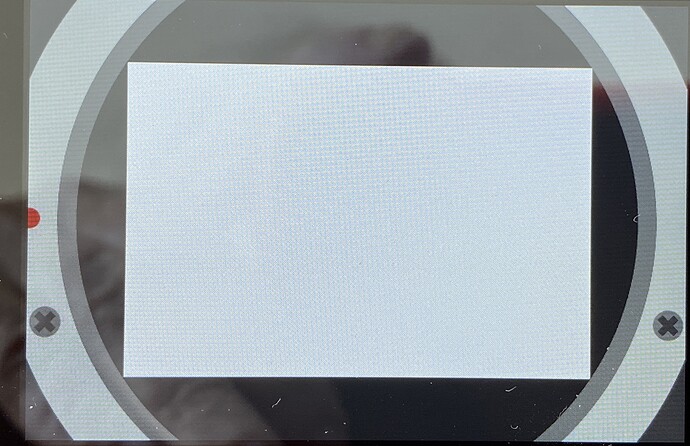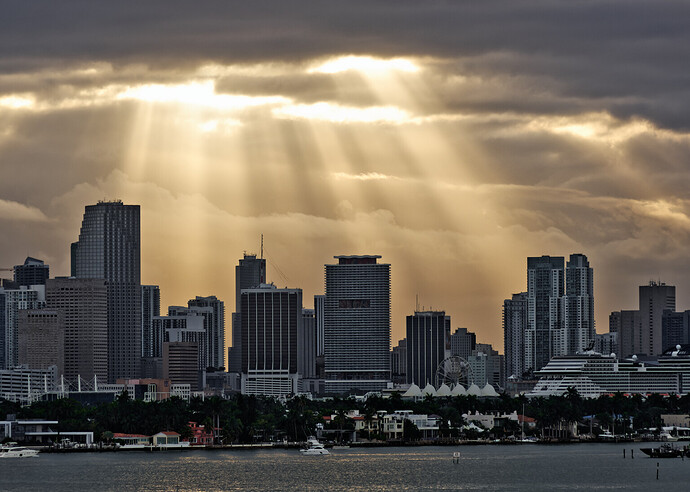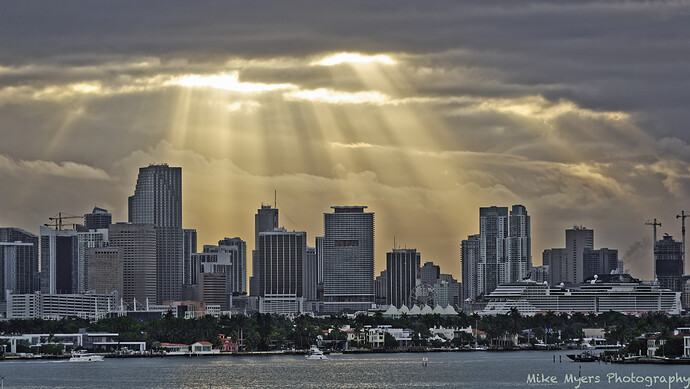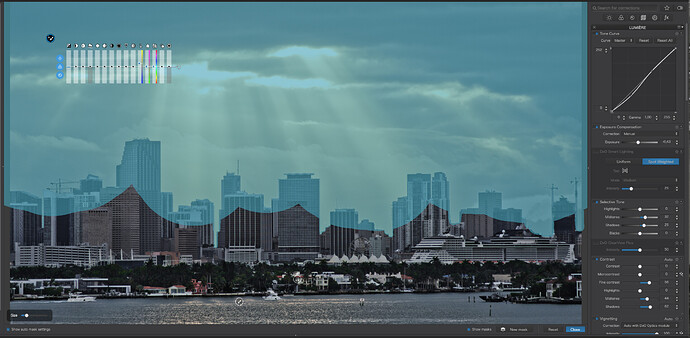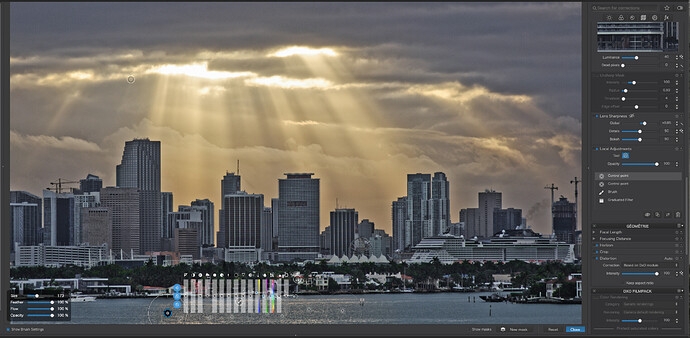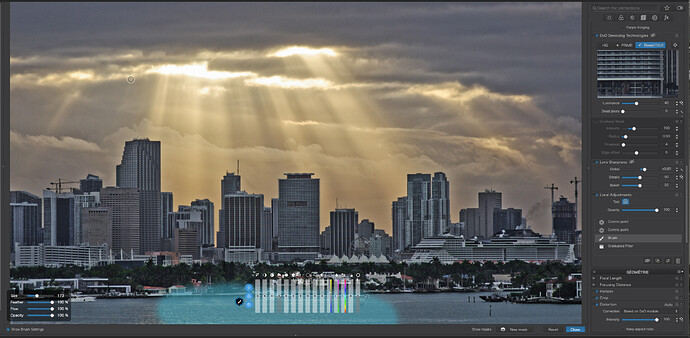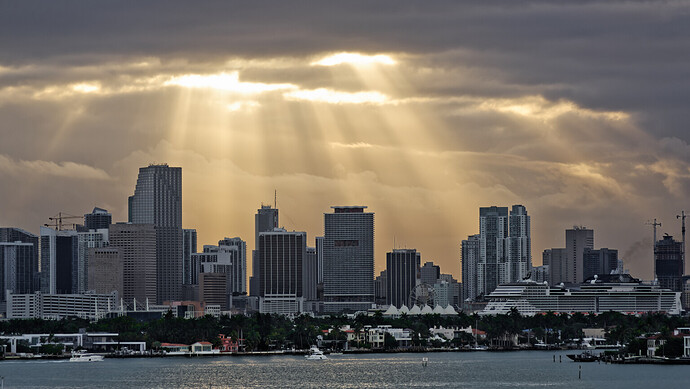Right. What I’m about to write is not meant to be in any way critical - more just pointing out odds and ends that I would like to question about what you have done.
I notice that you had left the Smart Lighting in, thus causing the “halo” effect that @OXiDant mentioned and that I got rid of in the later version I posted.
Getting rid of Smart Lighting then left the sky too strong for your liking, so you attempted to “weaken” it by adding control points, which, although not obvious in this case, can leave a “blotchy” effect on a plainer sky.
So, for the sake of a learning exercise, I replaced the control points with an auto-mask, which detects the boundaries with the buildings and, effectively, covers the whole sky without overlapping the buildings.
Now that the sky is separately manipulable, you can then adjust it without fear of affecting anything else.
In trying to add more reflection to the water, you actually added a (line of) control point…
… but there was already a brush mask in place that you could have altered…

Unfortunately, I hadn’t done enough to make the difference so, here is how I have removed the control points and just edited the brush mask…
Note how I have used micro contrast instead of straight contrast, since it is “gentler” and less likely to be obvious at the edge of the mask.
So, here’s my latest version…
Here’s the dop with this latest version added…
_MJM8669 | 2021-01-31-Sunset over Miami.nef.dop (346,1 Ko)
Don’t forget, what I have done is not necessarily how you would want the finished tonalities, it is more to demonstrate how to separate out the parts of the image for local adjustments.
